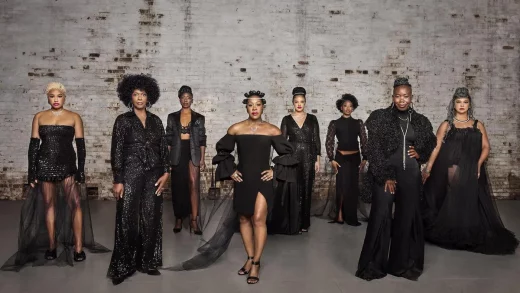
Carman Johnston, the director of development for Prairie Theatre Exchange, was tasked with the job this year to mark the semi-centennial anniversary of his organization, which began in a crumbling, gritty building on Princess Street in 1972.
That year, Winnipeg’s theatre community was at a pivot point: the Manitoba Theatre School, run by the Manitoba Theatre Centre, was closed down, creating a vacuum in local artistic circles. With great concern, teachers, actors and community members banded together to found the Manitoba Theatre Workshop, which later became known as Prairie Theatre Exchange.
In the ensuing five decades, PTE — which is marking its 50th anniversary this season — established itself as a central hub of performance and Prairie life. To mark the occasion, Johnston and the rest of PTE staff dove into the archive: 5,000 photographs, hundreds of costumes, handbills, posters, props and memories telling the story of a once-fledgling company that has become an elder statesperson of Winnipeg’s artistic community.
MIKAELA MACKENZIE / WINNIPEG FREE PRESS Everything we could fit in here is in here,’ says Carman Johnston, director of development for Prairie Theatre Exchange, of the exhibit brought together to celebrate the organization’s 50th anniversary
Inside Portage Place, where PTE has been headquartered since 1989, Johnston and company transformed a small studio into a large shrine to the company’s past.
“Everything we could fit in here is in here,” says Johnston, who joined PTE’s staff in 2002.
He isn’t kidding: the room is bursting with pieces of the past that show off the organization’s range.
In one corner, dedicated to the company’s adaptations of Robert Munsch, Johnston gestures toward a dragon, a paper-bag princess dress and a Fart, each stars of various Munsch stories. In almost every corner is Doreen Brownstone, the legendary Manitoba actor who has starred in more PTE shows than would fit in a paragraph. There is the guitar used in Joni Mitchell: The River, based on the Canadian icon’s music.
The names and works of playwrights, actors, lighting directors, costumers and stage designers all receive proper attention: a stunning example is a fireplace designed by Roger Schultz for a production of The Flyfisher’s Companion. Nearby is a maquette — a miniature stage design — for the Apartheid drama “Master Harold” … and the Boys, expertly crafted down to the finest detail.
MIKAELA MACKENZIE / WINNIPEG FREE PRESS A hat from the production of Unity (1918).
As Johnston walks around the room, it becomes quite clear that theatre is an act of community: photographs of cast and crew hard at work mingle with newspaper clippings and reviews, which commingle with sketches of costumes and characters.
It also becomes clear that as time elapses, theatre elongates and stretches itself to fit the freshly established confines of new eras and expectations. In many cases, Johnston’s tour illuminates how theatre can be a proactive voice for social change.
One case in point is the 1981 production of The Ecstasy of Rita Joe, to which a table and small exhibit are dedicated. In Rita Joe, a simple yet powerful creative choice was made: Indigenous actors were cast to portray the play’s Indigenous characters.
“After grasping the perspective that theatre could be an instrument of change and after witnessing (former artistic director Gord McCall’s) courage to embrace change, my world was drastically altered and redirected,” wrote actor and singer Tom Jackson, who made his theatre debut in Rita Joe.
When it came to filling the room, Johnston says it would have been impossible to have included everything. For a theatre company that started out in a dingy building on Princess Street, that’s a beautiful problem to have half a century after its first day.
MIKAELA MACKENZIE / WINNIPEG FREE PRESS A guitar from the production of Jodi Mitchell: The River.
MIKAELA MACKENZIE / WINNIPEG FREE PRESS A vest from the production of The Rez Sisters.
MIKAELA MACKENZIE / WINNIPEG FREE PRESS Wardrobe sketches from the production of The War Being Waged.
MIKAELA MACKENZIE / WINNIPEG FREE PRESS The 50th anniversary exhibit at Prairie Theatre Exchange.



